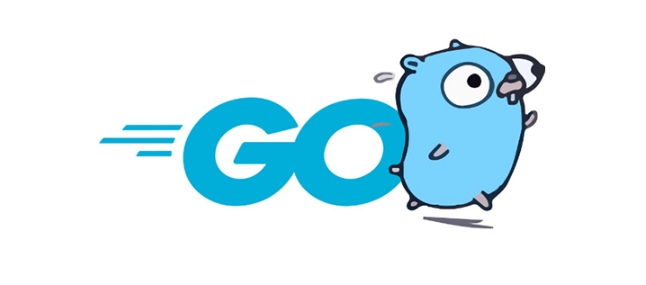The OAuth2 implementation is divided into client and server. The client uses the golang.org/x/oauth2 package. The steps are: 1. Introduce the package; 2. Configure client information and build a Config object; 3. Generate an authorization link; 4. Process callbacks to obtain the token; 5. Construct an HTTP client with authorization. The server takes go-oauth2/oauth2 as an example. The process includes: 1. Initialize storage; 2. Set client information; 3. Create an OAuth2 service instance; 4. Write routing and processing authorization and token requests. Notes include: cross-domain issues, status verification, HTTPS enabled, Token validity management, and Scope control granularity.

OAuth2 is a widely used authorization protocol in modern web applications. It allows clients (Clients) to obtain user resource access rights through the server (Server) security authentication process. If you are developing an application that requires integration of OAuth2, whether as a client or a server, it is necessary to understand the basic implementation method.

Let’s talk about the common OAuth2 client and server implementation methods in the Go language from the perspective of actual operation.
Implementing the client using the oauth2 package
Go officially maintains a commonly used OAuth2 client library: golang.org/x/oauth2 , which is the preferred package for most developers.

The steps for use are as follows:
- Introduce package:
import "golang.org/x/oauth2" - Configure client information, including ClientID, ClientSecret, RedirectURL, and Scopes
- Build the OAuth2 configuration object:
conf := &oauth2.Config{
ClientID: "your-client-id",
ClientSecret: "your-client-secret",
RedirectURL: "http://localhost:8080/callback",
Endpoint: oauth2.Endpoint{
AuthURL: "https://provider.com/oauth/authorize",
TokenURL: "https://provider.com/oauth/token",
},
Scopes: []string{"read", "write"},
}- Generate an authorization link and guide the user to jump:
url := conf.AuthCodeURL("state")- After user authorization, callback is processed and the token is obtained:
token, err := conf.Exchange(context.Background(), code)
- After obtaining the token, you can construct an authorized HTTP client:
client := conf.Client(context.Background(), token)
resp, _ := client.Get("https://api.provider.com/user")This process is applicable to OAuth2 authorization to access mainstream platforms such as Google, GitHub, Facebook, etc.

Implement a basic OAuth2 server
If you want to build your own OAuth2 authorization server, the Go community has several mature libraries to refer to, such as go-oauth2/oauth2 or osin .
Taking go-oauth2/oauth2 as an example, the general process for building a simplest server side is as follows:
1. Initialize memory or database storage
manager := manage.NewDefaultManager() manager.MustTokenStorage(storage.NewMemoryTokenStorage())
2. Set client information
clientStore := storage.NewMemoryClientStore()
clientStore.Set("client_id", &models.Client{
ID: "client_id",
Secret: "client_secret",
Domain: "http://localhost:8080",
})
manager.MapClientStorage(clientStore)3. Create an OAuth2 service instance
server := authorize.NewServer(manager) server.SetAllowGetAccessRequest(true)
4. Write routes that handle authorization and token requests
http.HandleFunc("/authorize", func(w http.ResponseWriter, r *http.Request) {
server.HandleAuthorizeRequest(w, r)
})
http.HandleFunc("/token", func(w http.ResponseWriter, r *http.Request) {
server.HandleTokenRequest(w, r)
})After starting the service, you can use the standard OAuth2 client to initiate authorization requests to your service.
Of course, the production environment also needs to consider more details such as persistent storage, refreshing tokens, PKCE support, etc.
Frequently Asked Questions and Precautions
- Cross-domain problem : OAuth2 login involves multiple domain name redirection, be sure to set the CORS policy correctly.
- Status verification : The
stateparameters passed in AuthCodeURL must be verified to prevent CSRF. - HTTPS must be enabled : all OAuth2-related communications should go through HTTPS, otherwise there will be security risks.
- Token validity period management : Pay attention to the expiration time of the token and use Refresh Token reasonably.
- Scope control granularity : Design a suitable Scope permission system according to business needs.
In general, Go's ecosystem has been relatively mature in the implementation of OAuth2. Clients can quickly integrate with official libraries, and servers also have ready-made frameworks available. The key is to understand the interaction process between individual roles and how to embody these logic in the code. Basically all is it, not complicated but it is easy to ignore details.
The above is the detailed content of Go OAuth2 Client and Server Implementations. For more information, please follow other related articles on the PHP Chinese website!

Hot AI Tools

Undress AI Tool
Undress images for free

Undresser.AI Undress
AI-powered app for creating realistic nude photos

AI Clothes Remover
Online AI tool for removing clothes from photos.

Clothoff.io
AI clothes remover

Video Face Swap
Swap faces in any video effortlessly with our completely free AI face swap tool!

Hot Article

Hot Tools

Notepad++7.3.1
Easy-to-use and free code editor

SublimeText3 Chinese version
Chinese version, very easy to use

Zend Studio 13.0.1
Powerful PHP integrated development environment

Dreamweaver CS6
Visual web development tools

SublimeText3 Mac version
God-level code editing software (SublimeText3)

Hot Topics
 What are the implications of Go's static linking by default?
Jun 19, 2025 am 01:08 AM
What are the implications of Go's static linking by default?
Jun 19, 2025 am 01:08 AM
Go compiles the program into a standalone binary by default, the main reason is static linking. 1. Simpler deployment: no additional installation of dependency libraries, can be run directly across Linux distributions; 2. Larger binary size: Including all dependencies causes file size to increase, but can be optimized through building flags or compression tools; 3. Higher predictability and security: avoid risks brought about by changes in external library versions and enhance stability; 4. Limited operation flexibility: cannot hot update of shared libraries, and recompile and deployment are required to fix dependency vulnerabilities. These features make Go suitable for CLI tools, microservices and other scenarios, but trade-offs are needed in environments where storage is restricted or relies on centralized management.
 How does Go ensure memory safety without manual memory management like in C?
Jun 19, 2025 am 01:11 AM
How does Go ensure memory safety without manual memory management like in C?
Jun 19, 2025 am 01:11 AM
Goensuresmemorysafetywithoutmanualmanagementthroughautomaticgarbagecollection,nopointerarithmetic,safeconcurrency,andruntimechecks.First,Go’sgarbagecollectorautomaticallyreclaimsunusedmemory,preventingleaksanddanglingpointers.Second,itdisallowspointe
 How do I create a buffered channel in Go? (e.g., make(chan int, 10))
Jun 20, 2025 am 01:07 AM
How do I create a buffered channel in Go? (e.g., make(chan int, 10))
Jun 20, 2025 am 01:07 AM
To create a buffer channel in Go, just specify the capacity parameters in the make function. The buffer channel allows the sending operation to temporarily store data when there is no receiver, as long as the specified capacity is not exceeded. For example, ch:=make(chanint,10) creates a buffer channel that can store up to 10 integer values; unlike unbuffered channels, data will not be blocked immediately when sending, but the data will be temporarily stored in the buffer until it is taken away by the receiver; when using it, please note: 1. The capacity setting should be reasonable to avoid memory waste or frequent blocking; 2. The buffer needs to prevent memory problems from being accumulated indefinitely in the buffer; 3. The signal can be passed by the chanstruct{} type to save resources; common scenarios include controlling the number of concurrency, producer-consumer models and differentiation
 How can you use Go for system programming tasks?
Jun 19, 2025 am 01:10 AM
How can you use Go for system programming tasks?
Jun 19, 2025 am 01:10 AM
Go is ideal for system programming because it combines the performance of compiled languages ??such as C with the ease of use and security of modern languages. 1. In terms of file and directory operations, Go's os package supports creation, deletion, renaming and checking whether files and directories exist. Use os.ReadFile to read the entire file in one line of code, which is suitable for writing backup scripts or log processing tools; 2. In terms of process management, the exec.Command function of the os/exec package can execute external commands, capture output, set environment variables, redirect input and output flows, and control process life cycles, which are suitable for automation tools and deployment scripts; 3. In terms of network and concurrency, the net package supports TCP/UDP programming, DNS query and original sets.
 How do I call a method on a struct instance in Go?
Jun 24, 2025 pm 03:17 PM
How do I call a method on a struct instance in Go?
Jun 24, 2025 pm 03:17 PM
In Go language, calling a structure method requires first defining the structure and the method that binds the receiver, and accessing it using a point number. After defining the structure Rectangle, the method can be declared through the value receiver or the pointer receiver; 1. Use the value receiver such as func(rRectangle)Area()int and directly call it through rect.Area(); 2. If you need to modify the structure, use the pointer receiver such as func(r*Rectangle)SetWidth(...), and Go will automatically handle the conversion of pointers and values; 3. When embedding the structure, the method of embedded structure will be improved, and it can be called directly through the outer structure; 4. Go does not need to force use getter/setter,
 What are interfaces in Go, and how do I define them?
Jun 22, 2025 pm 03:41 PM
What are interfaces in Go, and how do I define them?
Jun 22, 2025 pm 03:41 PM
In Go, an interface is a type that defines behavior without specifying implementation. An interface consists of method signatures, and any type that implements these methods automatically satisfy the interface. For example, if you define a Speaker interface that contains the Speak() method, all types that implement the method can be considered Speaker. Interfaces are suitable for writing common functions, abstract implementation details, and using mock objects in testing. Defining an interface uses the interface keyword and lists method signatures, without explicitly declaring the type to implement the interface. Common use cases include logs, formatting, abstractions of different databases or services, and notification systems. For example, both Dog and Robot types can implement Speak methods and pass them to the same Anno
 How do I use string functions from the strings package in Go? (e.g., len(), strings.Contains(), strings.Index(), strings.ReplaceAll())
Jun 20, 2025 am 01:06 AM
How do I use string functions from the strings package in Go? (e.g., len(), strings.Contains(), strings.Index(), strings.ReplaceAll())
Jun 20, 2025 am 01:06 AM
In Go language, string operations are mainly implemented through strings package and built-in functions. 1.strings.Contains() is used to determine whether a string contains a substring and returns a Boolean value; 2.strings.Index() can find the location where the substring appears for the first time, and if it does not exist, it returns -1; 3.strings.ReplaceAll() can replace all matching substrings, and can also control the number of replacements through strings.Replace(); 4.len() function is used to obtain the length of the bytes of the string, but when processing Unicode, you need to pay attention to the difference between characters and bytes. These functions are often used in scenarios such as data filtering, text parsing, and string processing.
 How do I use the io package to work with input and output streams in Go?
Jun 20, 2025 am 11:25 AM
How do I use the io package to work with input and output streams in Go?
Jun 20, 2025 am 11:25 AM
TheGoiopackageprovidesinterfaceslikeReaderandWritertohandleI/Ooperationsuniformlyacrosssources.1.io.Reader'sReadmethodenablesreadingfromvarioussourcessuchasfilesorHTTPresponses.2.io.Writer'sWritemethodfacilitateswritingtodestinationslikestandardoutpu






